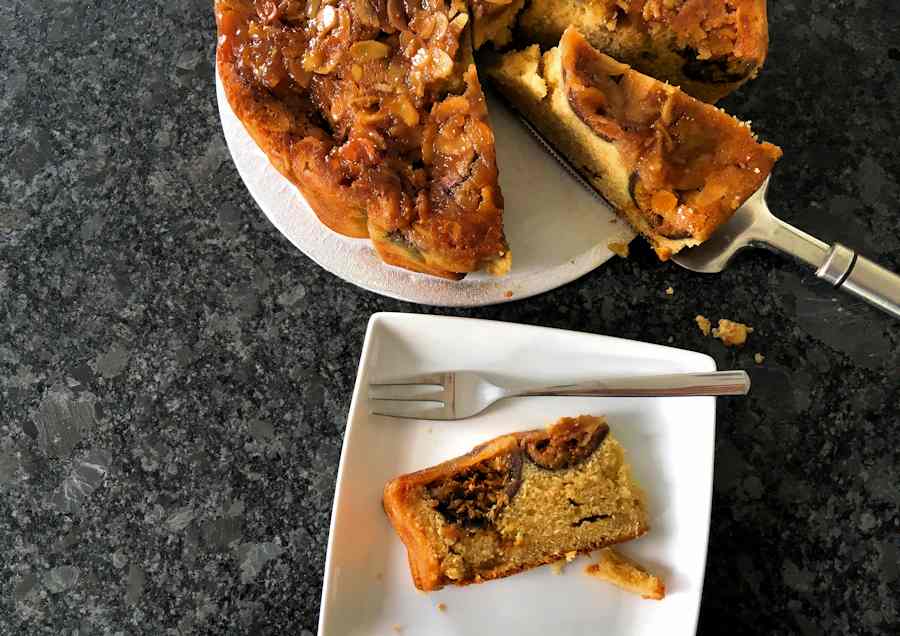
The problem with those upside down cakes is that you just never know what you’re going to get. It’s like a box of chocolates. It’s the opposite to what you see is what you get. It’s a surprise, surprise! for people who hate surprises.
The advantage is solving the soggy bottom problem – the bottom is the top. Ditto the sinkage-to-the-bottom issue. Plus the fruit gets cooked jammy and nice; hence the original upsider was Tatin, with apples – notoriously hard and raw when baked atop a cake.
The drawbacks – where to begin? The fruit may not cook enough because you don’t know what’s happening down there. Or to the contrary – it may be desperately burning there and you’ll never know, but for the smell. The sticky business – when the cake will cling to the bottom of the tin by the whole might of the fruit – may be resolved by springform and parchment. But there’s no fun of looking into the oven during the baking process and no control over the baking cake which for a control freak like me is seriously frustrating.
The moment of truth when inverting the cake is not very often the ‘ahhh…’, but rather the ‘arghhh!’. The fruit looks melted, and not in a good way. Nothing got caramelised against all hope and the common first impression is about how it should have been baked upside up after all. Plus a crack appears after a short while because the fruit topping expands having landed on top.
Truth be told though, this is an exceedingly nice cake, all in all. The figs get sticky and melt into the almond layer; and if they don’t look quite as appealing as I was hoping – well, the proof of the pudding and all that.